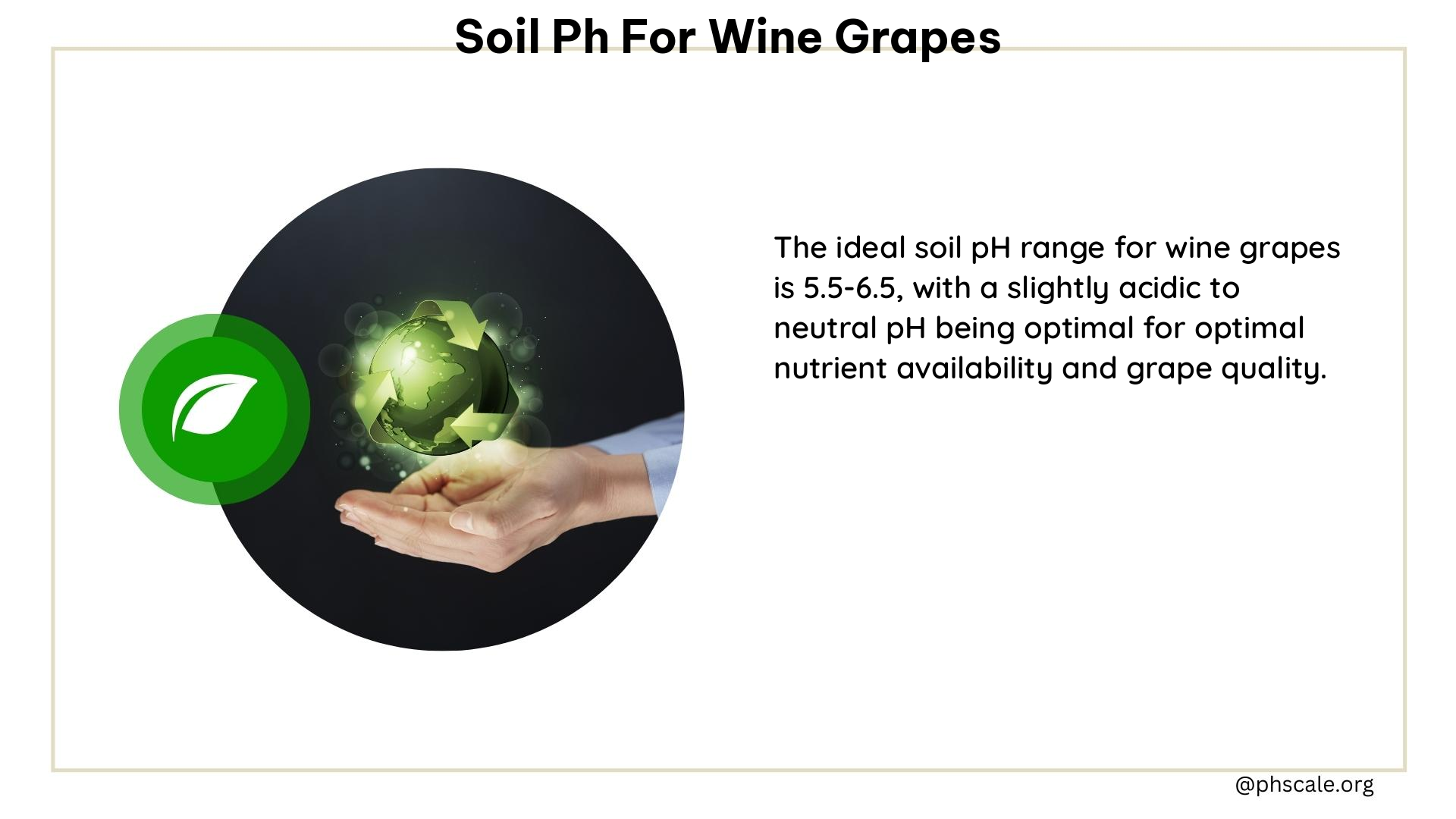Soil pH is a critical factor in the cultivation of wine grapes, as it directly impacts the availability of essential nutrients for grapevines. In this comprehensive guide, we’ll explore the optimal pH range, the impact of pH on nutrient absorption, specific pH requirements for different grape varieties, and effective methods for balancing soil pH to ensure the health and productivity of your wine grape vineyard.
Optimal pH Range for Grapevines
The ideal pH range for grapevines is between 5.5 and 7.0, with a neutral pH of 7 being the preferred target. This pH range allows for the optimal balance and availability of essential nutrients, such as nitrogen, phosphorus, and iron, which are crucial for the growth and development of the vines.
Impact of Soil pH on Nutrient Absorption

Soil pH directly affects the availability and absorption of various nutrients by grapevines. In the optimal pH range, nutrients are more readily available for the vines to uptake, leading to better overall plant health and productivity.
| Nutrient | Optimal pH Range |
|---|---|
| Nitrogen | 5.5 – 7.0 |
| Phosphorus | 5.5 – 7.0 |
| Potassium | 5.5 – 7.0 |
| Iron | 5.5 – 6.5 |
| Calcium | 5.5 – 7.0 |
| Magnesium | 5.5 – 7.0 |
Specific pH Requirements for Grape Varieties
Different grape varieties have varying preferences when it comes to soil pH. Understanding these specific requirements is crucial for ensuring the optimal growth and development of your wine grapes.
- Vinifera Grapes: Prefer a slightly higher pH, around 5.9-6.2.
- Hybrids and American Grapes: Can tolerate a lower pH, with an optimal range of 5.7-6.2.
- Labrusca Grapes: Prefer a pH range of 5.0 to 6.5, with 5.6 or higher being more desirable.
Contaminants and Chemicals Affecting Soil pH
Soil pH can be influenced by various contaminants and chemicals, such as aluminum, iron, zinc, and manganese. These elements can either precipitate nutrients out of the soil solution or become toxic to the vines, depending on their availability and the soil’s pH.
Balancing Soil pH
To maintain the optimal pH range for your wine grape vineyard, you can employ the following methods:
- Lime Application: Adding lime to the soil can help raise the pH, especially in acidic soils.
- Sulfur Application: Applying sulfur can lower the pH, particularly in alkaline soils.
- Organic Matter: Incorporating organic matter, such as compost, can help stabilize soil pH and improve overall soil structure and fertility.
Home Remedies and DIY Methods
In addition to professional soil management techniques, there are several home remedies and DIY methods that can be used to balance soil pH for wine grape cultivation:
- Adding Compost: Compost is rich in organic matter and can help stabilize soil pH.
- Using Natural Fertilizers: Fertilizers like manure or fish emulsion can provide nutrients while maintaining a balanced pH.
The Importance of Soil pH in Wine Grape Cultivation
Soil pH has been recognized as a critical factor in wine grape cultivation for centuries, with the ancient Greeks and Romans understanding the significance of soil quality in producing high-quality grapes. Today, soil pH remains a key aspect of viticulture, as it directly impacts the health and productivity of grapevines.
Helpful Resources
For further information and guidance on managing soil pH for wine grapes, the following resources are recommended:
- Wine Grape Production Guide for Eastern North America
- Michigan State University Extension
- Grape Grower’s Handbook
Reference:
- VinePair. (2017). The Amazing Reason that the pH in Soil Makes or Breaks Your Wine. Retrieved from https://vinepair.com/articles/why-soil-matters-drainage-and-ph/
- Winemaking Talk. (2014). Soil pH – Winemaking, Grape Growing & Vineyard Forum. Retrieved from https://www.winemakingtalk.com/threads/soil-ph.43844/
- Wine-Grape-Growing.com. (n.d.). Acidic Vineyard Soils – Grape Grower’s Handbook. Retrieved from http://www.wine-grape-growing.com/wine_grape_growing/management_vineyard_soils/acidic_vineyard_soils.htm
- Grapes Extension. (2019). Soil pH in Vineyards – Grapes. Retrieved from https://grapes.extension.org/soil-ph-in-vineyards/
- Michigan State University. (2013). Soil Sampling Vineyards and Guidelines for Interpreting the Soil Test Results. Retrieved from https://www.canr.msu.edu/news/soil_sampling_vineyards_and_guidelines_for_interpreting_the_soil_test_results.
